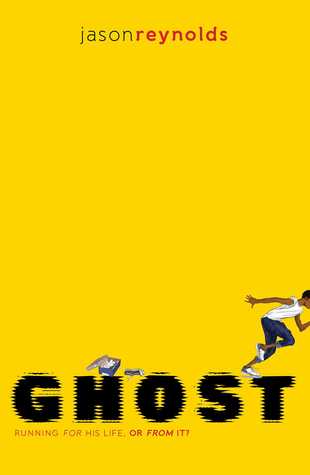 As the inside jacket states, "Black is urban and rural, wealthy and poor, mixed race, immigrants, and more - because there are countless ways to be Black enough." I hope young black Americans, whatever their background, find themselves reflected in these pages. Non-black Americans should read these stories as windows into communities they might not otherwise see.
As the inside jacket states, "Black is urban and rural, wealthy and poor, mixed race, immigrants, and more - because there are countless ways to be Black enough." I hope young black Americans, whatever their background, find themselves reflected in these pages. Non-black Americans should read these stories as windows into communities they might not otherwise see.
This collection of 17 short stories reflects the diversity within the black community. A number of the stories feature LGBTQ characters. Issues span the spectrum from code switching to sexual identity to death and suicide; from family dynamics and mental health to friendships and relationships; from self-identity to the power of musical influence to sexual assault.
These stories resonate. They are honest and relevant, social media use and all. The voices are compelling, the dialogue authentic. Individually, my ratings for stories varied from 3 to 5 stars, and averaged to 4.3, but the book on the whole gets 5 stars for its range and importance.
Reading these stories as a Chinese-American, the more I read, the more I wished there was such an anthology for young Asian-Americans. I can only imagine how self-affirming it might have felt to read a book called "Asian Enough: Stories of Being Young & Asian in America" as a teenager.
Below I am listing each individual story, a brief summary, and my personal rating for each (sans explanation, because that would take too long).
- "Half a Moon" by Renee Watson (★★★★★): A teen counselor at a camp that encourages black city girls to appreciate nature finds herself unexpectedly dealing with unresolved family issues.
- "Black Enough" by Varian Johnson (★★★★★): A black boy from an affluent, predominantly white community learns something about himself when he spends time with his cousin and his friends in a predominantly black community in South Carolina.
- "Warning: Color May Fade" by Leah Henderson (★★★★): A talented black senior in an affluent, predominantly white private boarding school struggles with speaking her truth through art in the face of parental disapproval.
- "Black. Nerd. Problems." by Lamar Giles (★★★★★): An entertaining glimpse into the world of mall employment through the eyes of a black teenager who self-identifies as a sci-fi nerd.
- "Out of the Silence" by Kekla Magoon (★★★): A girl with a secret tries to come to terms with the unexpected death of a classmate, the only other person who knew her secret.
- "The Ingredients" by Jason Reynolds (★★★★★): Heartwarming banter among four buddies in Brooklyn walking home from the local pool on a hot summer day.
- "Oreo" by Brandy Colbert (★★★★★): An upper middle class black girl in a predominantly white suburb of Chicago gets accepted to a historically black college, visits her family in a rural, predominantly black community in Missouri, and wonders if attending an HBCU is the right decision for her.
- "Samson and the Delilahs" by Tochi Onyebuchi (★★★): Star of the debate team, the straitlaced son of a Nigerian immigrant meets his new neighbor, a black girl who introduces him to heavy metal music, unlocking a part of himself he didn't know was missing.
- "Stop Playing" by Liara Tamani (★★★★★): Houston-area teens at a church youth retreat navigate the complexities of relationship drama.
- "Wild Horses, Wild Hearts" by Jay Coles (★★★): In the rural South, a black farm boy gets to know the white farm boy next door, though their parents are in a feud and are narrow-minded in different ways.
- "Whoa!" by Rita Williams-Garcia (★★★★): A part-time model and fashion student sees, in his great-grandmother's water basin, a vision of an 1840s slave, with whom he has an improbable conversation.
- "Gravity" by Tracey Baptiste (★★★★★): A Trinidadian immigrant in Brooklyn is sexually assaulted.
- "The Trouble with Drowning" by Dhonielle Clayton (★★★★): In the DC area, a girl from a wealthy family, with emotionally detached parents, struggles in the aftermath of traumatic events.
- "Kissing Sarah Smart" by Justina Ireland (★★★★): A mixed race girl spends the summer between high school and college visiting her white grandmother in small-town Maryland and coming to terms with her sexual identity while her mother tends to her own mental health.
- "Hackathon Summers" by Coe Booth (★★★★★): Every summer in high school, a boy from Rochester attends a weekend hackathon at NYU, where he falls for a Muslim girl.
- "Into the Starlight" by Nic Stone (★★★★★): An upper middle-class girl from a well-to-do part of Atlanta gets to know a boy with a bad reputation from a less privileged, predominantly black part of town.
- "The (R)evolution of Nigeria Jones" by Ibi Zoboi (★★★): A girl raised in a cult-like community dedicated to black nationalism doesn't actually believe in the movement and wants to break free.




